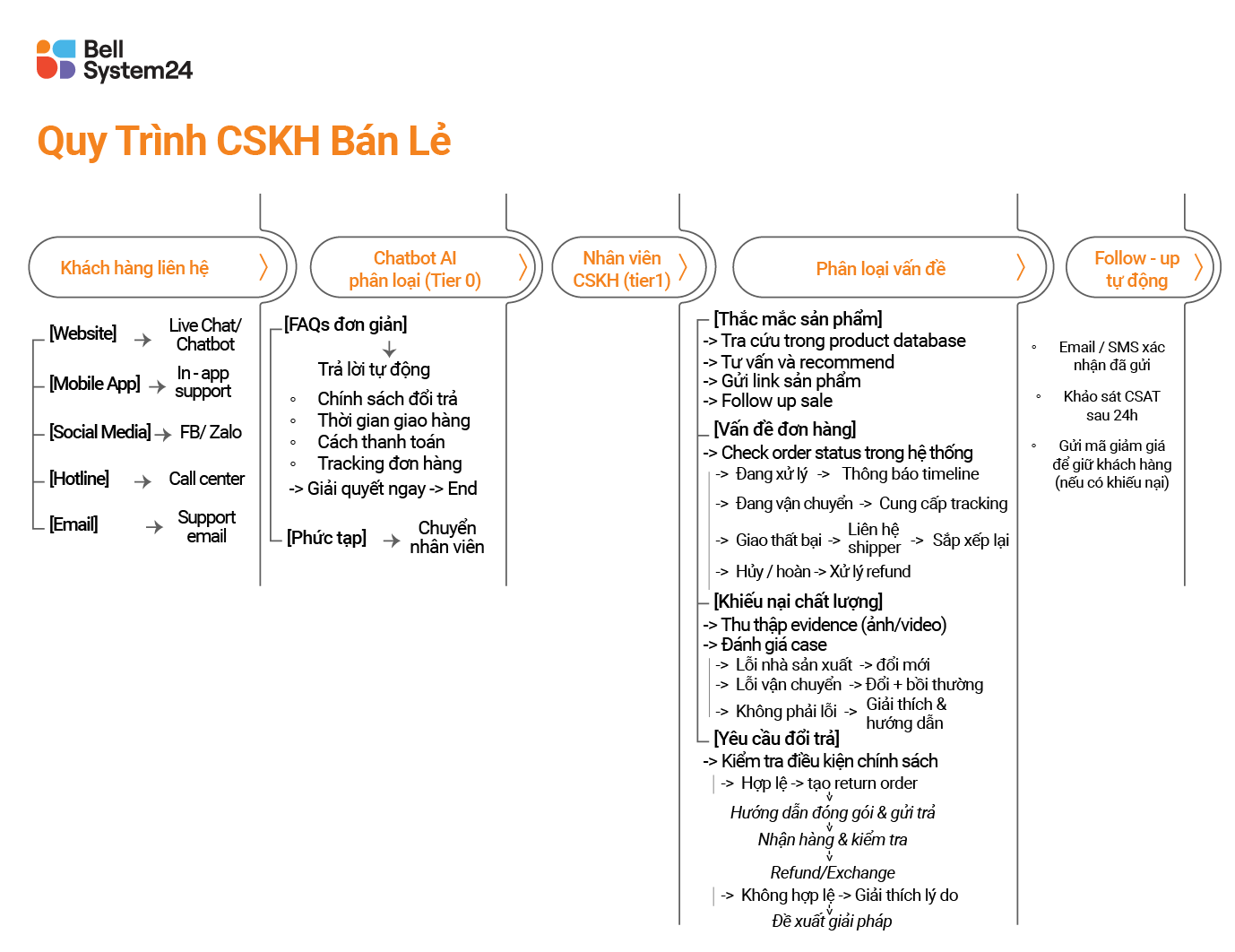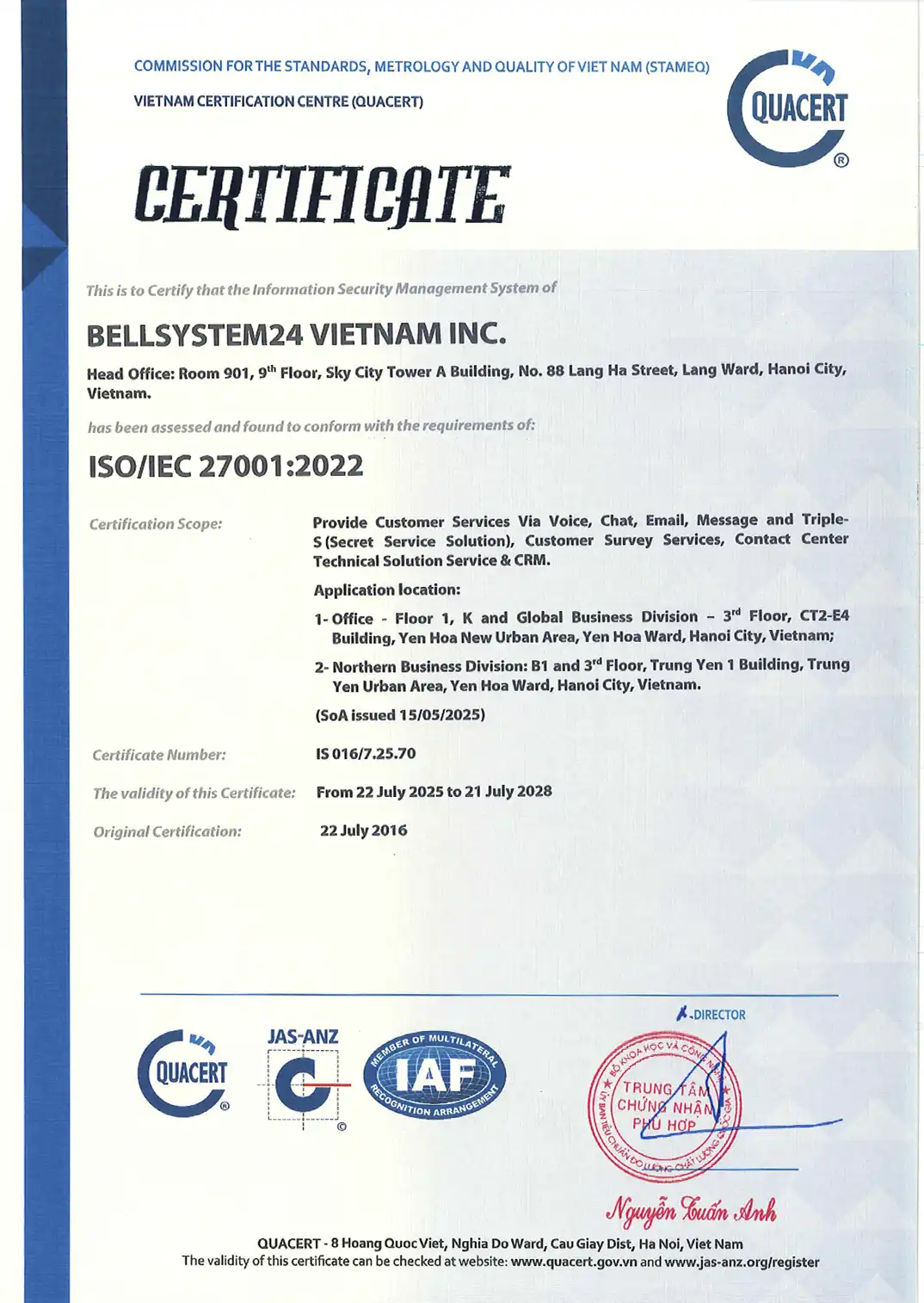Cold calling is a form of calling to approach potential customers who have never had any prior contact with the business.
This is a common strategy in telesales and telemarketing activities.
When should you implement cold calling?
Cold calling should not always be used; this method is often effective in certain situations. To understand better, you need to grasp the advantages and disadvantages of this method.
Advantages and disadvantages of cold calling
| Advantages | Disadvantages |
|---|---|
| You can search for data yourself, helping to expand opportunities to reach new customers who do not yet have information. | High rejection rate: Because customers are unprepared and may not be interested in the product/service |
| Low cost compared to other marketing methods | It may cause inconvenience to customers in many cases. |
| Direct and quick access | High skill requirements: Cold calling requires the person doing it to have good communication and situational handling skills, otherwise it will easily fail. |
| You can flexibly adjust the conversation based on customer feedback. | It's not always effective: Because not all customers are willing to listen. |
| Through phone calls, employees can build relationships and potentially convert them into long-term customers in the future. | Cold calling can be considered harassment if not done properly, leading to legal issues or negative reactions. |
| Create opportunities to learn and improve: Through each call, employees can improve their skills and learn more about the market, products/services. | Significant time and effort: Cold calling requires making numerous calls to find opportunities, which takes a lot of time and effort. |
Situations where cold calling is acceptable
- Businesses with limited customer data but needing to expand their market and find new customers
- The market has a moderate level of competition, low
- Simple, accessible products and services
- B2B sales, specific customer base.
- Selling products while researching the market.
Steps for making cold calls
1. Determine the purpose of the call
In many cases, the goal of cold calling does not necessarily have to be closing a sale. It is essential to set specific goals and plan an appropriate calling frequency.
In addition to closing sales, call center agents can set simpler goals such as:
- Provide complete product information
- Befriend customers
- Keep the call going for more than 1 minute, etc.
2. Research potential customers
Before calling, learn about potential customers, their needs, and characteristics. You can refer to information on social media or any available data to create a suitable call script.
3. Develop a call script
Preparing a call script for each target audience will help create a good impression and convey information that is relevant to customers. However, don't be too rigid; be flexible according to the situation when interacting with customers.
4. Make a call
When calling, choose the most concise and impressive way to start the conversation. Customers often decide whether to continue listening or end the call within the first 5 seconds, so making the most of this brief time is extremely important. A clear, emotional greeting will help you score points with customers. Quickly introduce yourself, your company, and the benefits the customer can gain from this conversation.

5. Listen and understand customer needs
Only by truly listening attentively and understanding customer needs can you empathize and offer reasonable solutions to persuade customers. Many telesales employees often make the mistake of neglecting this skill, as they focus too much on quickly closing sales without thoroughly addressing the issues customers are facing. Therefore, honing the skill of empathetic listening is essential.
See also: Excellent customer service skills
6. Provide appropriate solutions
After listening to the needs and concerns of customers, it is now time to offer appropriate solutions to address those needs. Emphasize the strengths of the product and the benefits that customers will receive.
7. Handling Rejections
In telesales, customer rejection is inevitable. However, skillful rejection handling can turn a negative situation into an opportunity to re-persuade customers and build long-term relationships.
See also: How to handle customer rejection tactfully
8. Close the sale
Closing the sale is the final and most important step in the telesales process. To achieve this goal, employees need preparation, tact, and the ability to handle situations flexibly.
Close the sale if you see that the call has all three of the following elements:
- Ensure customers fully understand the information and unique value of the product.
- Customers are understood and find agreement.
- Build customer trust, break down psychological barriers, and answer all questions.
9. Follow up and provide customer care after the call
After ending the call, send an email or message to thank them, guide them through the purchasing and payment process, and continue to maintain the relationship. This is how to ensure customers remember you and increase the likelihood of repeat purchases.
Mistakes to avoid
- Lack of preparation before the call.
- Spam, pressuring customers.
- Violation of professional ethics.
- Violation of the law. (Refer to the decree) 91/2020/NĐ-CP on combating spam messages, spam emails, and spam calls)
Improve cold calling effectiveness
Call automation
To overcome the high rejection rate due to customers potentially not being interested in the product/service, many businesses have implemented auto call feature in the call center to make multiple calls simultaneously. When using this feature, the system will automatically dial and play a recorded message (IVR) introducing the product. If customers wish to receive advice, they will press the key as instructed, and the call will be forwarded to the call center agent.

Improve telesales skills
Telesales skills are a crucial factor in determining the effectiveness of cold calling. By equipping yourself with these skills and continuously improving through self-study, you will be able to win over customers, increase your closing rate, and maintain a positive attitude throughout the entire process.
See also: Top 9 telesales skills for closing deals, from basic to advanced.
Data analysis and improvement
Data analysis helps telesales staff identify strengths and weaknesses in the calling process. By using data, businesses can:
- Measure the effectiveness of each call (answer rate, conversion rate).
- Analyze factors affecting success rates (call duration, script, voice).
- Build more accurate profiles of potential customers.
- Identify common errors that can be improved in the future.
The use of CRM Storing and analyzing data is essential in professional call centers.
Conclusion
Cold calling is a challenging customer outreach method, but it can be highly effective when done correctly. By preparing thoroughly, developing appropriate scripts, listening, and handling situations flexibly, businesses can increase their success rate in each call. Combined with data analysis and the application of modern technologies, cold calling not only helps expand the pool of potential customers but also optimizes sales performance in the long term.
Bellsystem24 Vietnam's telesales service
With experience operating call centers since 2006, we have implemented telesales service Successfully serving major brands such as Viettel, VTVcab, UOB, K+, PVI Insurance, Abbott, California Fitness, etc. Contact us today for a consultation on our solutions.







